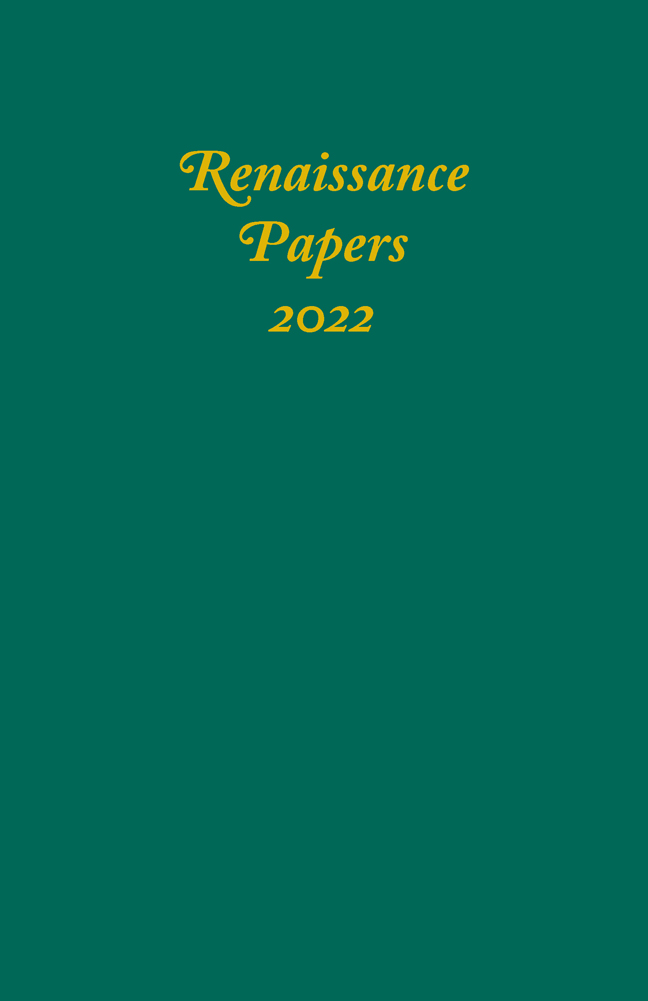Book contents
- Frontmatter
- Contents
- Dedication
- The Space of Hell, the Place of Print in Early Modern London
- The Jewish Bride and Oriental Concubine: Raphael's Donna Velata and La Fornarina
- Into the Abyss: Hans Holbein the Younger's Dead Christ
- Racialized Sacred Spaces: Narratives of Exclusion and Inclusion in Northern European Churches
- Place for Our Dead: Sacred Space and the Greek Community in Early Modern Venice
- Pantagruelion, Debt and Ecology: Ecocriticism and Early Modern French Literature in Conversation
- Race before Race in Edmund Spenser's Faerie Queene
- Materializing Lost Time and Space: Implications for a Transformed Scholarly Agenda
Into the Abyss: Hans Holbein the Younger's Dead Christ
Published online by Cambridge University Press: 22 February 2024
- Frontmatter
- Contents
- Dedication
- The Space of Hell, the Place of Print in Early Modern London
- The Jewish Bride and Oriental Concubine: Raphael's Donna Velata and La Fornarina
- Into the Abyss: Hans Holbein the Younger's Dead Christ
- Racialized Sacred Spaces: Narratives of Exclusion and Inclusion in Northern European Churches
- Place for Our Dead: Sacred Space and the Greek Community in Early Modern Venice
- Pantagruelion, Debt and Ecology: Ecocriticism and Early Modern French Literature in Conversation
- Race before Race in Edmund Spenser's Faerie Queene
- Materializing Lost Time and Space: Implications for a Transformed Scholarly Agenda
Summary
Hans Holbein the Younger's Dead Christ (Fig. 1), made in Basel circa 1521–22, is the only religious painting that bears his signature. By inserting his initials and the date of 1521 in Roman numerals (“M.D. XXI/ H.H.”) (Fig. 2), Holbein indicates that he is well-versed in Renaissance artistic conventions and their references to antiquity. More critically, however, the signature suggests that Holbein is engaging with issues of metapictoriality and representation by posing inquiries about the role of painting and its ability to facilitate the spiritual meditation of the viewer. By asserting the artist's presence, the inscription confounds and deepens the viewer's reception of Christ's human corpse.
Holbein's pictorial innovations in The Dead Christ begin with the unprecedented, highly illusionistic, life-size rendering of Christ. The emaciated and stiff body, stretched thin from hanging on the cross, reveals the wounds of the Passion. Christ wears a loincloth and lies in rigor mortis on a crumpled linen shroud. His head is turned slightly to the viewer while his eyes remain fixed in an absent gaze. Christ's discolored hand and knobby finger reveal the ravages of gangrene. Much has been written in scholarship about this unflinching portrayal of Christ's decomposing body and its profound impact on viewers. The painting starkly confronts the dichotomy of Christ's humanity and divinity during the tumultuous early years of the Reformation. The impact of the painting is evident in the well-known nineteenth-century account of Fyodor Dostoyevsky's encounter with the painting, which inspired his character Prince Myshkin to exclaim in The Idiot, “That picture! That picture … Why, a man's faith might be ruined by looking at that picture!” I will propose, however, that even more radical than Holbein's rendering of Christ's putrefied flesh is his choice of this specific sacred moment for the imagining.
The exact function of The Dead Christ is unknown, but the biblical subject and physical properties of the panel imply that it could have served as part of a predella, or the base of an altarpiece. The painting is very narrow, measuring approximately one foot high but six and a half feet wide, and therefore could have served in such a capacity. The placement of the painting as a predella would materially and structurally reiterate the concept of sacred burial. This has pictorial precedents.
- Type
- Chapter
- Information
- Renaissance Papers 2022 , pp. 35 - 46Publisher: Boydell & BrewerPrint publication year: 2023



